On View
12 Women of Abstract Expressionism to Know Now
The popular American art movement has plenty of female practitioners.
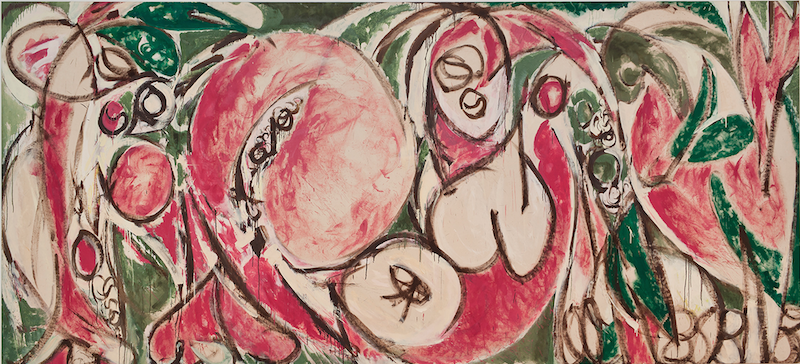
The popular American art movement has plenty of female practitioners.

Sarah Cascone

The first names that come to mind in Abstract Expressionism—Jackson Pollock, Willem de Kooning, and the like—may all be men, but women artists also played a crucial role in the internationally-renown movement. It’s time for some long-overdue recognition of other Ab Ex greats.
On view at the Denver Art Museum until September 25, curator Gwen Chanzit is spotlighting the achievements of such artists in the first museum exhibition to focus solely on female Abstract Expressionists painters, simply titled “Women of Abstract Expressionism.“ Featuring more than 50 major paintings, the show focuses on both East and West Coast artists, pairing familiar names, such as Helen Frankenthaler, with Perle Fine and Mary Abbott, among other less recognized figures.
“Except for a very small number of scholars who have spent their lives working in this field, there will be people you haven’t heard of,” Chanzit told artnet News. But, she points out, “ten years ago people didn’t really know Jay DeFeo.”
“This is not about pushing a feminist agenda, it’s about taking another look,” Chanzit added, pointing out that as recently as the 1980s, there wasn’t a single female artist in Janson’s History of Art, the standard college textbook. There have been recent museum surveys of female surrealists, Pop artists and Impressionists, but she was breaking new ground with her Denver show.
“It was so clear to me that it needed to be done,” Chanzit said.
In preparation for the exhibition, Chanzit cast a wide net, taking a look at the work of over 100 women, about 40 of whom she says would have been a good fit for the final show and are featured in the catalogue. What she found was that artists were important practitioners of Abstract Expressionism—the first internationally-influential American art movement—on both coasts, but that the Bay Area’s female painters were more accepted and given more opportunities than their New York counterparts.
Regardless of where they were based, however, these artists haven’t been a major part of the art historical discourse. “A lot of these works have not been seen much,” said Chanzit, who hopes the exhibition will bring well-deserved attention to its participants. Moving forward, “we hope they will be woven into the fabric of the discussion.”
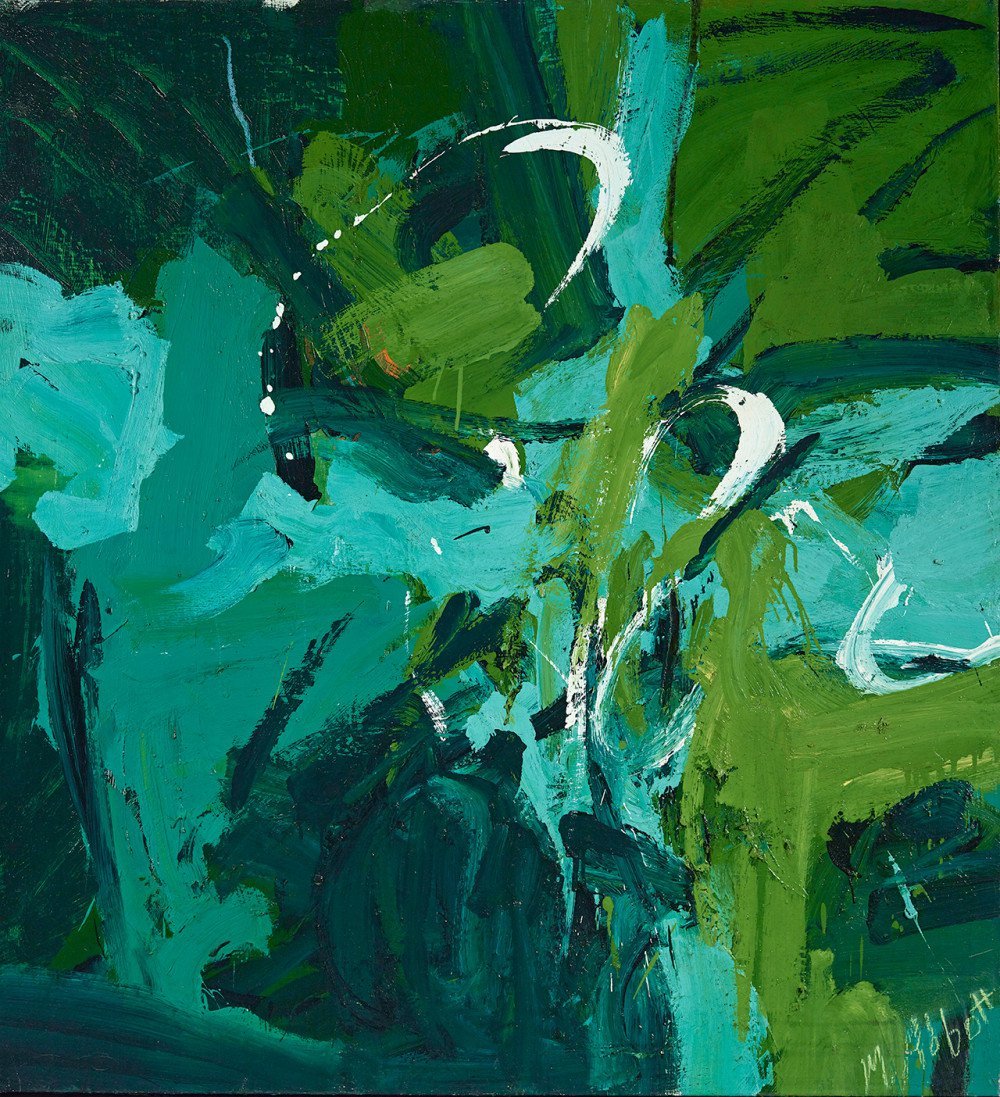
Mary Abbot, All Green (1954). Courtesy of the Denver Art Museum, gift of Janis and Tom McCormick, ©Mary Abbott.
1. Mary Abbott (1921–)
New York painter Mary Abbott studied under Barnett Newman and Mark Rothko, and was a friend of Willem de Kooning. She was a regular at New York’s Cedar Street Tavern, an important gathering place for artists and philosophers, and one of the few women in “the Club,” a group dedicated to discussing modern art.
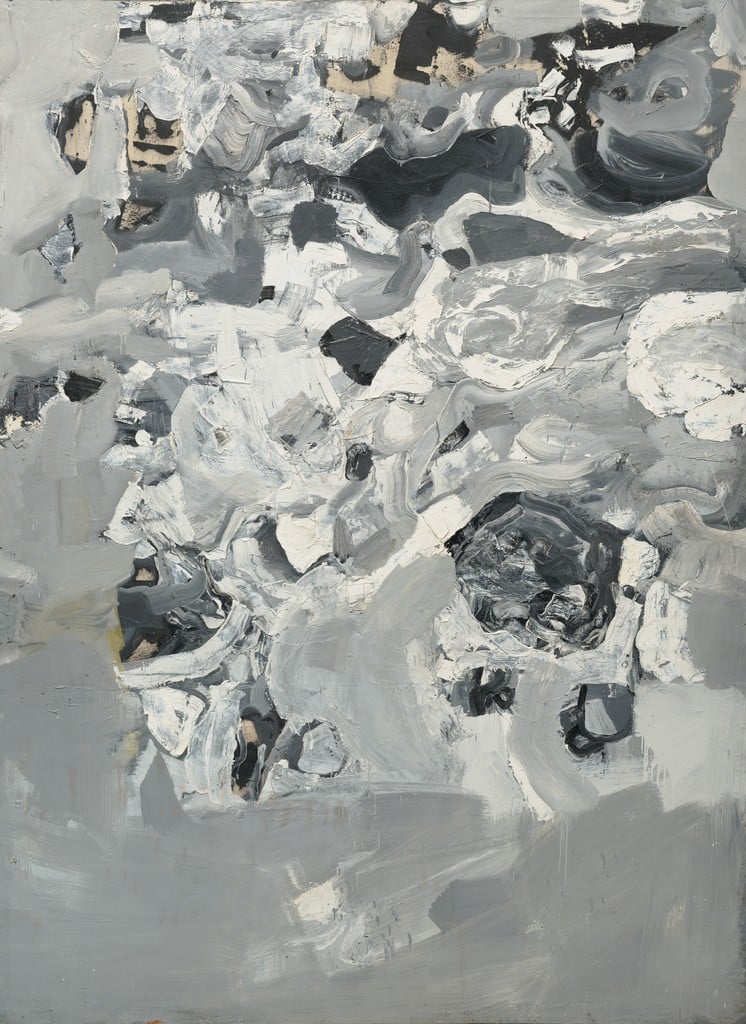
Jay DeFeo, Untitled (Everest), from the Mountain series, (1955). Collection of the Oakland Museum of California. Gift of Jay DeFeo. © 2015 the Jay DeFeo Trust/Artists Rights Society (ARS), New York.
2. Jay DeFeo (1929–1989)
Today, Jay DeFeo ranks among the better-known female artists of the era, but only after flying under the radar for many years. Best-known for her monumental painting The Rose, which is 10 feet tall, almost a foot thick, and weighs over a ton, DeFeo was the subject of a long-overdue retrospective organized by New York’s Whitney Museum of American Art in 2012–13.
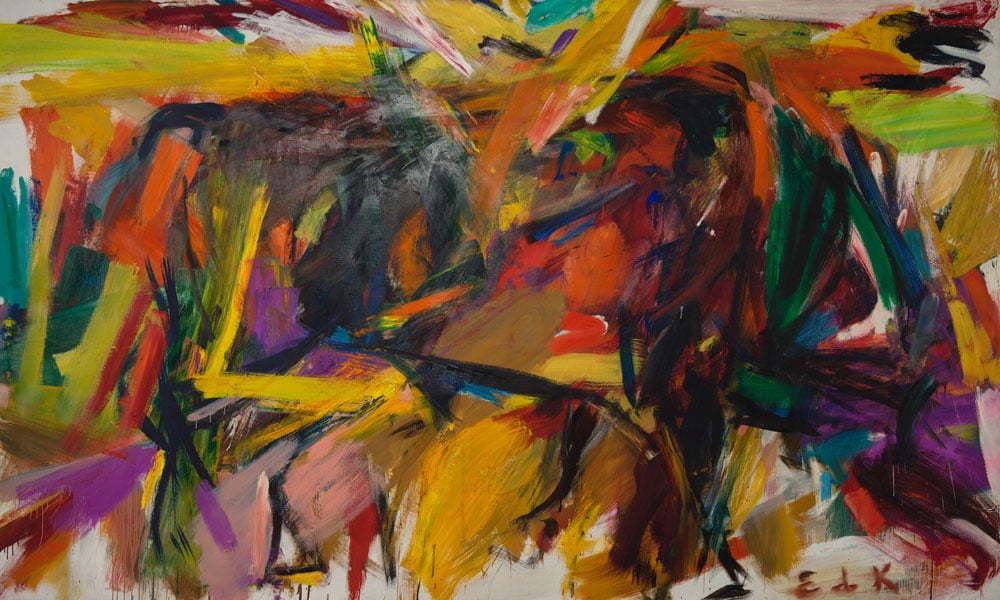
Elaine de Kooning, Bullfight (1959). Courtesy of the Denver Art Museum, Vance H. Kirkland Acquisition Fund, © Elaine de Kooning Trust.
3. Elaine de Kooning (1918–1989)
Elaine de Kooning signed her paintings with her initials so that viewers wouldn’t judge her for being a woman. Like Abbott, she was a member of the exclusive “the Club.” De Kooning also worked as an art critic and teacher, and was elected to the National Academy of Design in 1985. She was also married to Willem, who got a bit more of the spotlight.

Perle Fine, Summer I (1958–59). Collection of Craig A. Ponzio, courtesy McCormick Gallery, Chicago. ©AE
Artworks, LLC.
4. Perle Fine (1905–1988)
As is common among the women on this list, Perle Fine was married to a fellow artist, although her husband, Maurice Berezov, focused on photography after art school, and never achieved widespread fame. A member of “the Club” along with Abbott and de Kooning, Fine explored other painting styles beyond Abstract Expressionism, and had solo shows at Betty Parsons Gallery and with other New York dealers.

Helen Frankenthaler, Western Dream (1957). Helen Frankenthaler Foundation, New York. © 2016 Helen Frankenthaler Foundation/Artists Rights Society (ARS), New York. Photograph by Rob McKeever, courtesy of Gagosian Gallery.
5. Helen Frankenthaler (1928–2011)
Helen Frankenthaler studied under Rufino Tamayo and Hans Hofmann, and made her debut in Adolph Gottlieb’s group show “Fifteen Unknowns” at New York’s Kootz Gallery in 1950. Married to Robert Motherwell from 1958 to 1971, Frankenthaler was also once romantically involved with critic Clement Greenberg.
Like Jackson Pollock, she developed her own painting technique, a revolutionary staining method that inspired a movement called color field painting.
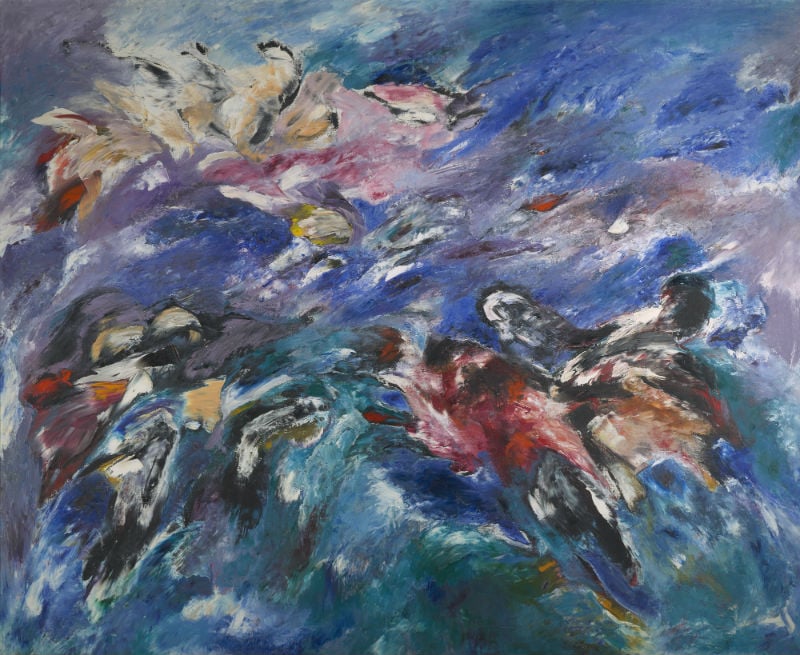
Sonia Gechtoff, The Beginning (1960). Denver Art Museum: Vance H. Kirkland Acquisition Fund, 2015.62. © Sonia Gechtoff.
6. Sonia Gechtoff (1926–)
As a Philadelphia transplant to San Francisco, Sonia Gechtoff later returned to the East Coast in 1958. In New York, she found it difficult to replicate the success that she had experienced exhibiting her work at San Francisco’s Six Gallery and at the 1958 Brussels World’s Fair. She later showed at the 1961 São Paulo Biennial.
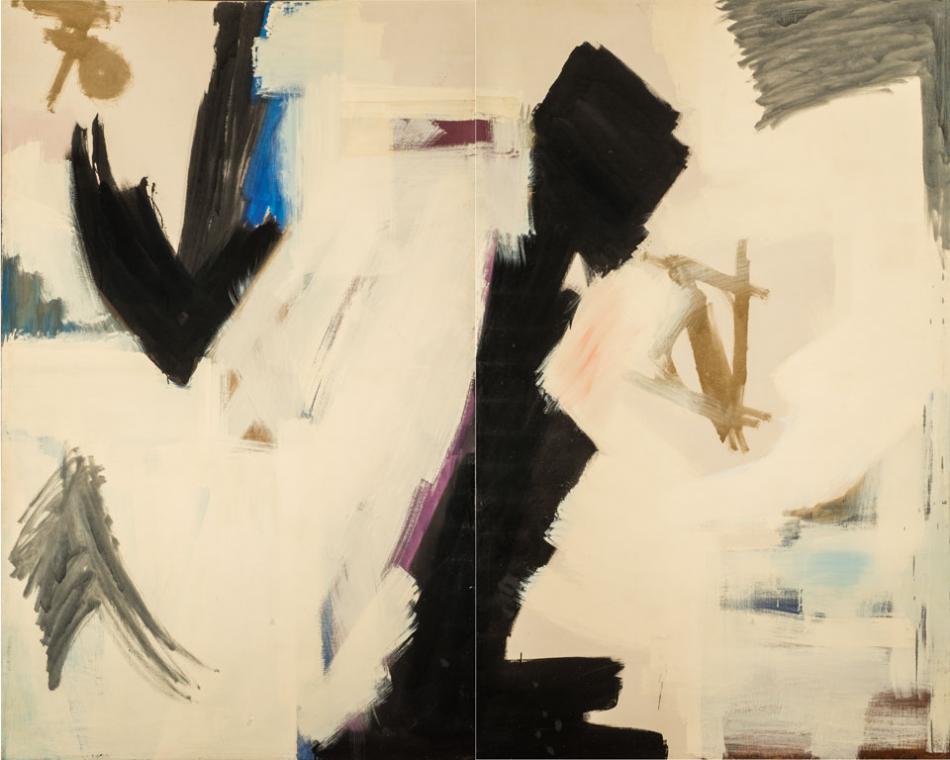
Judith Godwin, Epic (1959). On loan from the National Museum of Women in the Arts, Washington, DC. Gift
of Caroline Rose Hunt. Photograph by Lee
Stalsworth. © Judith Godwin.
7. Judith Godwin (1930–)
Judith Godwin studied under Hofmann, Will Barnet, and Vaclav Vytlacil, creating work inspired by Modern dance. Godwin, who shared a studio with Franz Kline, was influenced by Zen Buddhism, which she was introduced to by her friend, Japanese painter Kenzo Okada. She showed with Stable Gallery and Betty Parsons, and a had a 2010 solo show at Spanierman Modern featured in artnet Magazine at the time.
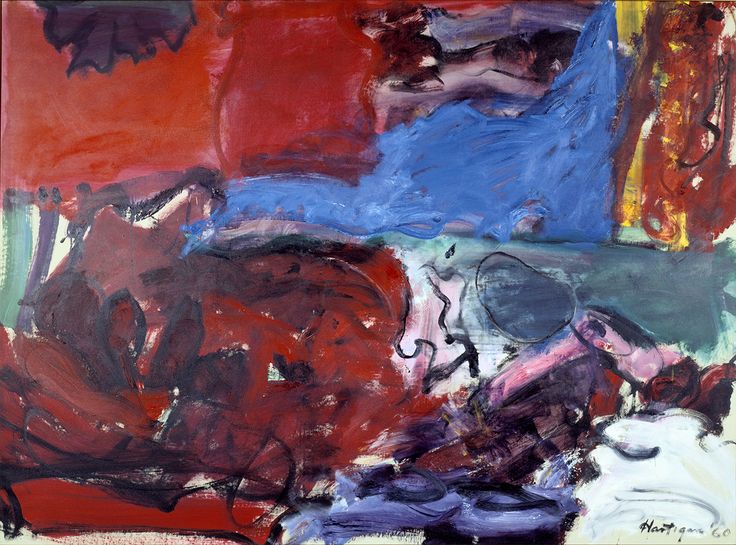
Grace Hartigan, New York City Rhapsody (1960). Courtesy of the Mildred Lane Kemper Art Museum, Washington University in St. Louis. University purchase, Bixby Fund, 1960. © Estate of Grace Hartigan.
8. Grace Hartigan (1922–2008)
Grace Hartigan’s artistic beginnings were humble, as a airplane factory draftsman during World War II. She later moved to Los Angeles and took drawing classes, initially showing her work under the name George Hartigan. The only woman included in the Museum of Modern Art’s 1956 show “Twelve Americans,” Hartigan was inspired to explore Abstract Expressionism by Pollock’s 1948 exhibition at Betty Parsons Gallery.
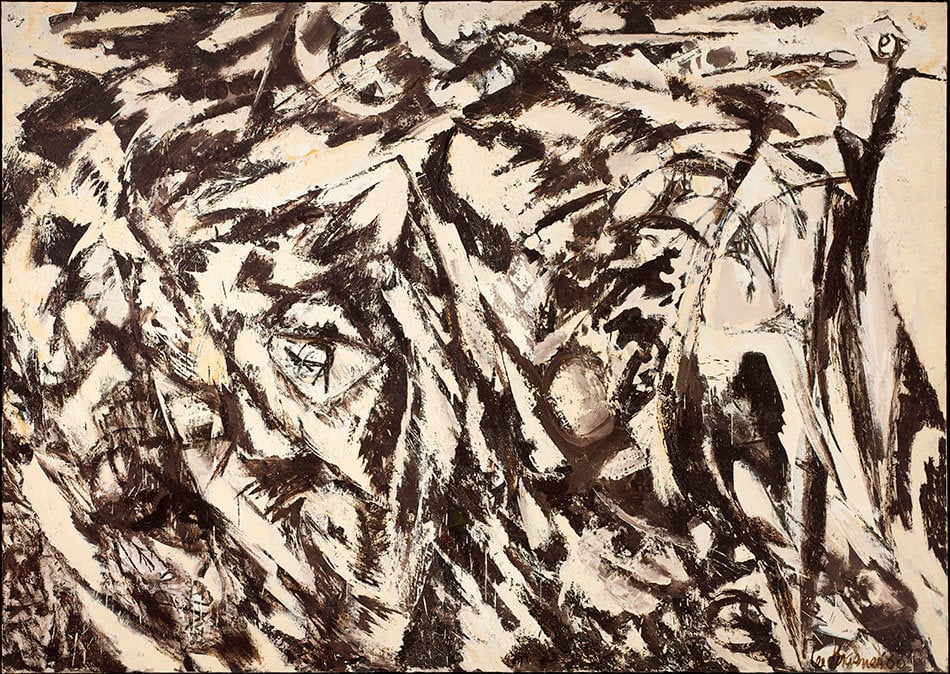
Lee Krasner, Charred Landscape (1960). Collection of Craig A. Ponzio. Photograph by William J. O’Connor. © 2015 Pollock Krasner Foundation/Artists Rights Society (ARS), New York.
9. Lee Krasner (1908–1984)
Before she married Pollock in 1945, Lee Krasner had a well-established art career of her own, having worked in the mural division and Public Works of Art Project during the mid-1930s and joined the American Abstract Artists group in 1939.
Krasner was the only woman included in the Whitney Museum of American Art’s “Abstract Expressionism: The Formative Years” in 1978, and was the subject of a retrospective at MoMA in 1983.
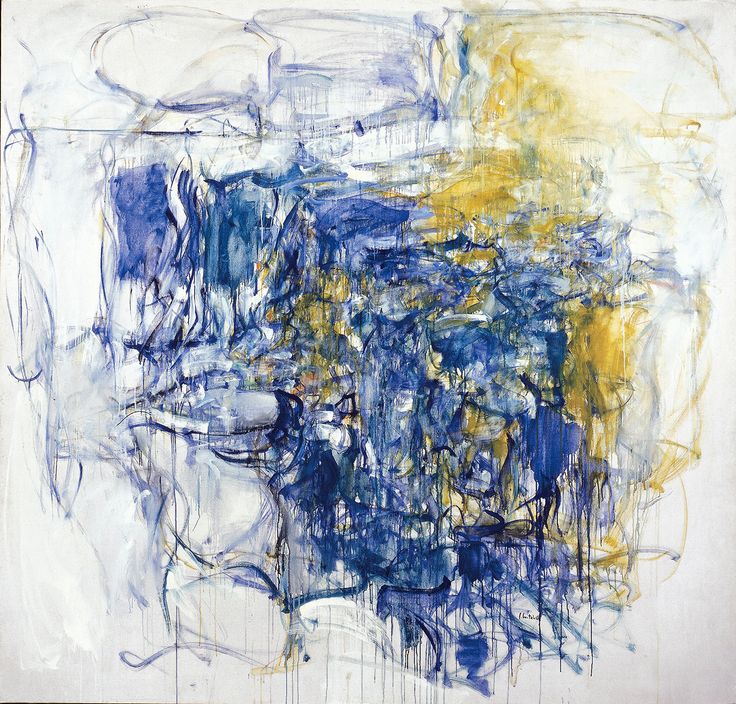
Joan Mitchell, Hudson River Day Line (1955). Collection of the McNay Art Museum. © Estate of Joan Mitchell.
10. Joan Mitchell (1925–1992)
A Chicago native, Joan Mitchell spent much of her career in Paris, but still garnered recognition in New York, appearing alongside Pollock, Willem de Kooning, and Hofman in Leo Castelli’s landmark 1951 exhibition the “Ninth Street Show.” In the mid-1950s, the Whitney and the MoMA each acquired one of Mitchell’s paintings.
In 1988, she became the first recipient of the College Art Association’s Distinguished Artist Award for Lifetime Achievement.
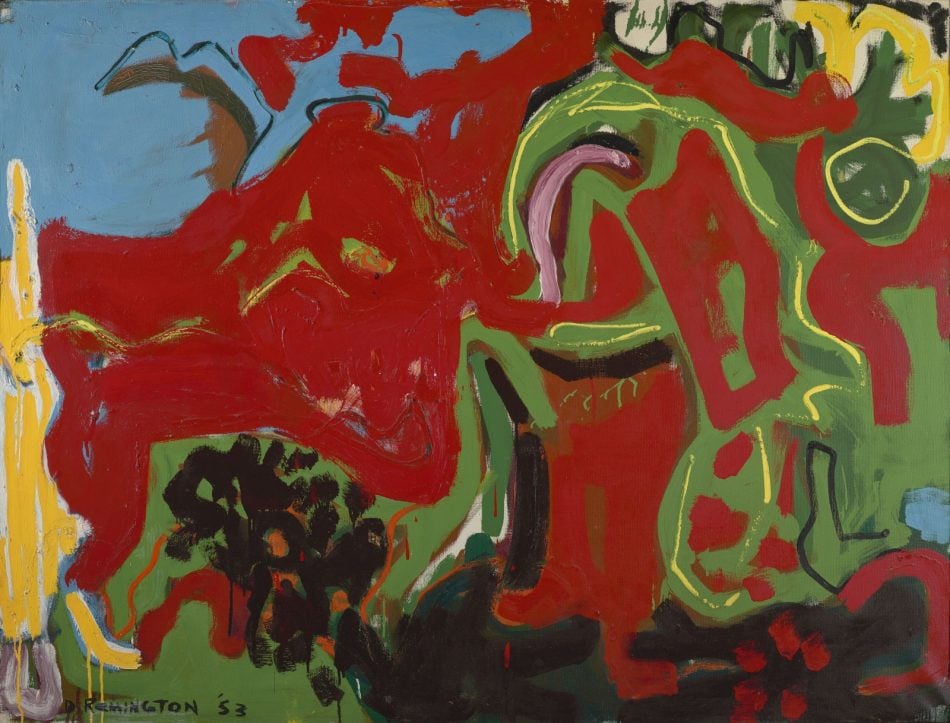
Deborah Remington, Apropos or Untitled (1953). Denver Art Museum: Vance H. Kirkland Acquisition Fund. Courtesy of the Deborah Remington Charitable Trust for the Visual Arts.
11. Deborah Remington (1930–2010)
Born in Haddonfield, New Jersey, Deborah Remington became an important figure among Bay Area Abstract Expressionists, with numerous solo shows at San Francisco’s Dilexi Gallery. Remington was the only woman among the six co-founders of San Francisco’s Six Gallery, and taught at numerous institutions, including the San Francisco Art Institute and Cooper Union in New York.
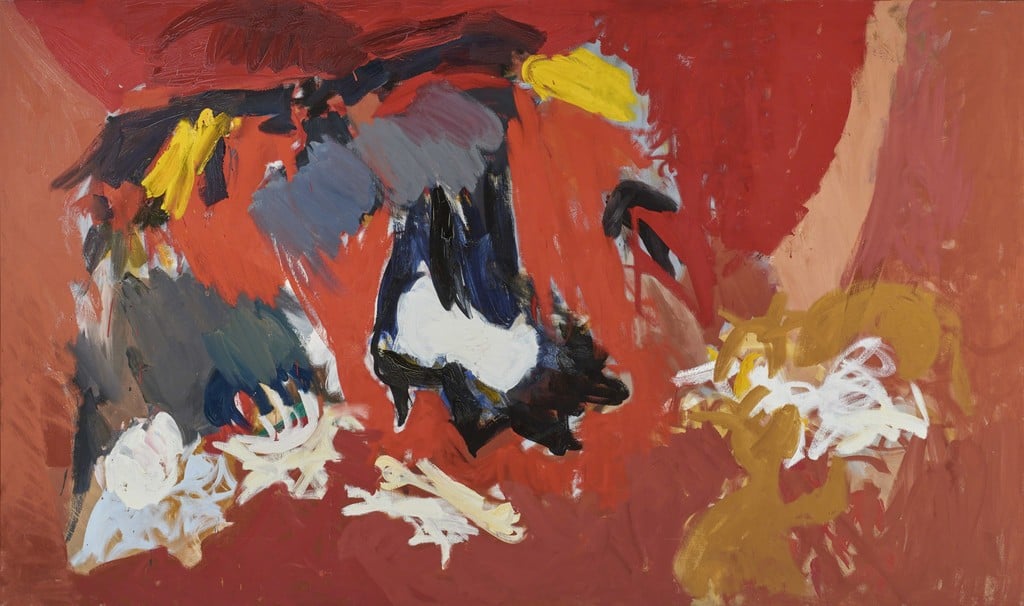
Ethel Schwabacher, Antigone I (1958). Collection of Christopher C. Schwabacher and Brenda S. Webster. © Estate of Ethel Schwabacher.
12. Ethel Schwabacher (1903–1984)
Ethel Schwabacher’s impressive list of teachers included Max Weber, Anna Hyatt Huntington, and Arshile Gorky—on whom she wrote the first authoritative monograph. She was represented by Betty Parsons Gallery, which held five solo shows of her work between 1953 and 1962.
“Women of Abstract Expressionism” is on view at the at the Denver Art Museum, 100 West 14th Avenue Pkwy, Denver, June 12–September 25, 2016.